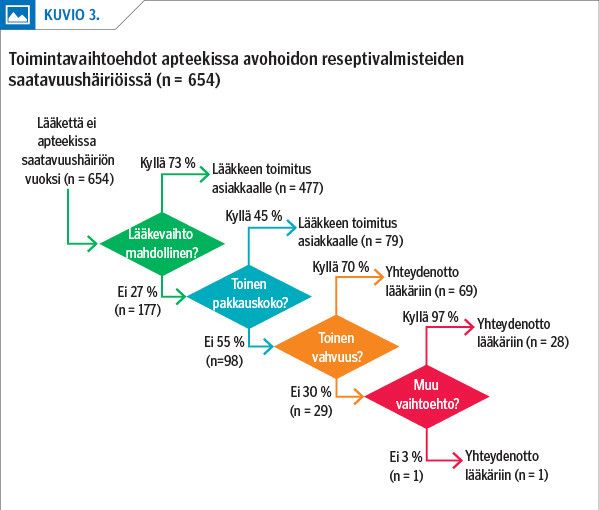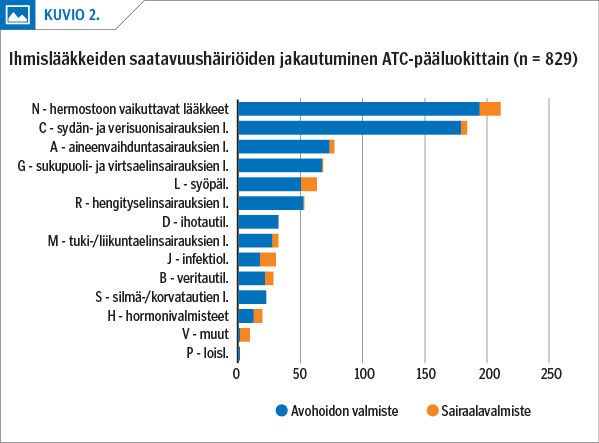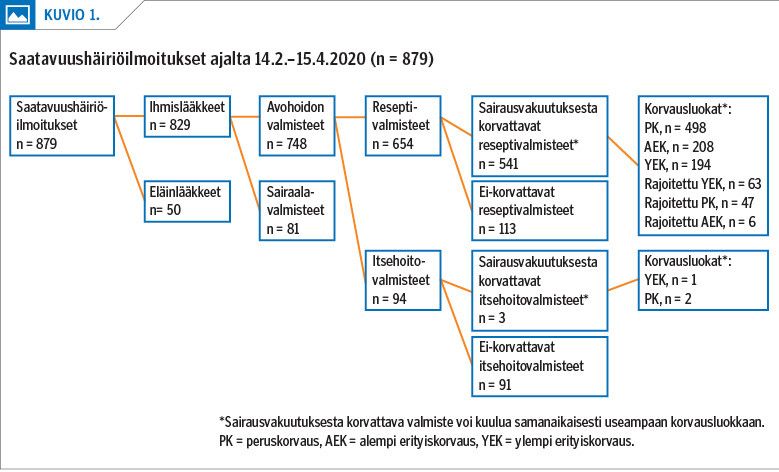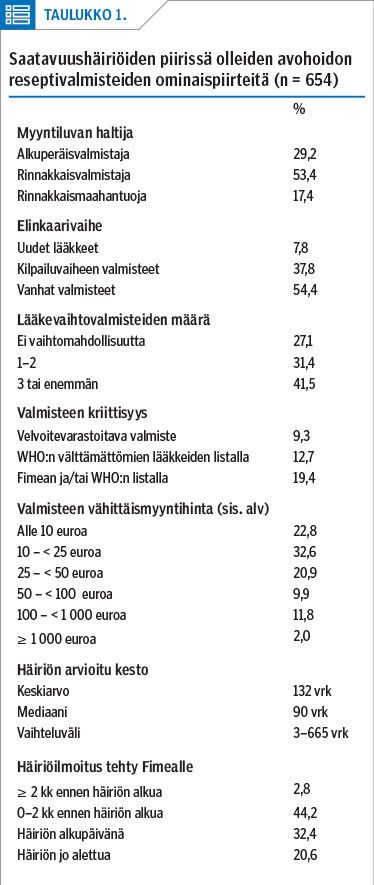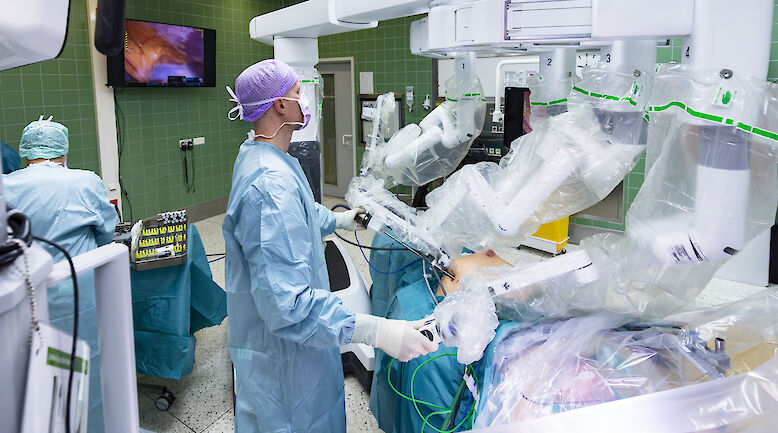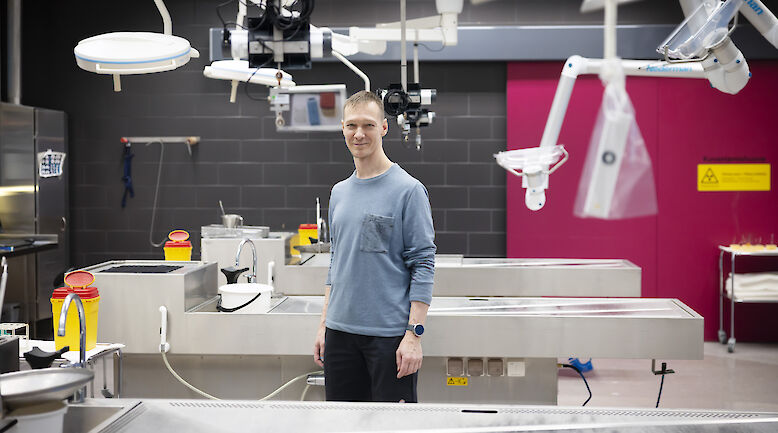A replacement medicine is available in most drug shortage cases

Background Drug shortages have increased sharply in recent years. We investigated the characteristics and criticality of the drugs in shortage, as well as the existence of substitution products, in Finland in spring 2020.
Methods The data comprised drug shortages reported to the Finnish Medicines Agency (Fimea) (n = 879), which were combined with information from Kela’s pharmaceutical database, Fimea’s list of interchangeable medicines and Fimea’s pharmaceutical database. A drug was considered critical if it was listed on the World Health Organization’s list of essential medicines and/or on Fimea’s list of products to be stocked as mandatory reserve supplies.
Results Most of the drugs in shortage are medicines commonly used in outpatient care, such as medicines for cardiovascular diseases and medicines that affect the nervous system. The typical drug in short supply is an older and more affordable product for which there are one or more generics on the market. About one-fifth of the medicines were considered critical. The majority (73%) of drugs in short supply can be substituted by an interchangeable product at community pharmacies.
Conclusions Although there has been an increase in the amount of drug supply shortages, a replacement medicine is available in most short supply cases.
